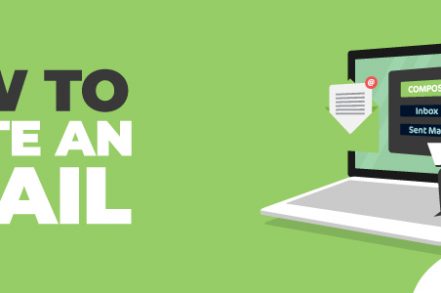It can be difficult to know how to make your email message effective. Whether you’re sending a business email or just catching up with friends, follow these tips on how to write an email the right way in 2024.
Every email you write should have a subject line, greeting, email body, and closing. But as with any written form of professional communication, there are standards that need to be followed.
How to Write an Email – Top Tips?
Email is an important business communication tool and has been for some time. Your email should be clear, concise, and actionable.
When you write an email, make sure to follow these best practices: know your goal and consider the audience. Keep it concise, proofread before sending and use proper etiquette

1. Figure Out What Your Email Is
Before you start writing an email, it’s important to think about what the recipient will do after they’ve read your message. Once you know that and decide on a course of action for them to take, then every word in your message should help bring this goal to fruition.
If you want the recipient to review a report, let them know what it is and why they need to read it. Let them know if there are any specific questions that should be answered or feedback needed so they can do their job.
2. Identify and Take your Audience into Consideration
When you send an email, make sure that your tone matches the person receiving it. For example, if you send a message to someone in charge of business operations at another company and don’t know who you are yet or what’s coming next, keep them updated on any news without sounding too informal.
If you’re emailing a friend, it’s probably safe to use “chatty” language and more informal words. However, if you’re emailing someone who doesn’t know you very well yet (or at all), keep your tone formal.
3. Keep it Short and Sweet
When you are emailing your audience, make sure to keep it short and sweet. They have a lot of other things on their plate so they won’t be able to read through the whole thing.
When you are editing your email, cut out any irrelevant information. This will make it easier to read and more likely to get a response.
4. Always Proofread
When you are emailing, be sure to take a moment and review it for any errors. If it is an important message with critical stakeholders, have someone else read over the content before sending.
5. Email Etiquette
When you email a contact, make sure to include a courteous greeting and closing. Additionally, be considerate of the recipient’s time by not contacting them after-hours or while they’re on leave unless it is an emergency.
6. Following up is Important
With the onslaught of emails that people receive on a daily basis, it’s not uncommon for them to forget or ignore your message. If they don’t respond within two days after you send an email, be sure to send a follow up email.
7. It is also important to schedule your emails
Another study by Litmus on the State of Email Engagement in 2021 found that people are most likely to read emails early in the morning.
This is due to a general decrease of email reading after lunchtime and into evening hours, with open rates starting around 6 am but usually peaking between 9-12 pm local time.
You have two options when it comes to your email strategy. You can send the email at a time you know they’re checking their inbox or wait for an off-peak time.
You can’t win. Either your email gets buried or it doesn’t get opened.
When you’re writing an email to someone in another state or country, make sure to factor in the time difference. Your noon maybe their 7 p.m., so consider when they’ll be most receptive to an email from you.
With Right Inbox’s email scheduling tool, you can set the time and date of your desired delivery. This allows you to schedule your emails to be delivered at just the right time for recipients.
8. Finally Check your Spelling and Grammar
You’re almost there – don’t ruin it at the last stretch.
All that time you spent crafting a perfect message is wasted when it’s riddled with errors and the recipient doesn’t even bother to read your email.
To avoid the error of typos, you can use Grammarly to check your writing while you are drafting it.
Common Email Writing Mistakes (and What to do Instead)?
It’s important not to make these eight mistakes when writing an email:
1 – Leaving out Oxford Commas
Oxford commas are polarizing. You either use them or you don’t, but they have their pros and cons in every situation. It all depends on your industry’s style guide for professional communications.
Just like a healthy marriage, AP style calls for clear communication. We also believe in the value of compromise. So as a reminder, the Stylebook doesn’t prohibit all Oxford commas. If omitting a comma could lead to confusion or misinterpretation, then use the comma.
2 – Avoid the Use of Hedging Language
Grammarly users know that when it comes to hedging, less is more. In emails especially, the use of phrases like “I think” or “you might be interested in” can make you sound uncertain and undermine your message.
If you’re going to disagree with someone, it’s best not to do so without a reason. That way people will actually understand your position and they’ll know that what you have is something worth considering.
3 – Avoid Extremely Long and/or Unclear Copies
The average person has a short attention span and is unlikely to read long emails. The content of your email should be concise, clear, and well-organized or you will get nothing but confusion in return.
You need to stay on point and not get distracted by your own thoughts.
Then, end with a call to action. Request that they get back in touch if they have any questions or would like more information.
4 – Don’t Overdo Being Casual or Formal
There are two ways to write that can be risky. On one hand, being too casual is seen as a rookie mistake and not taken seriously by your audience.
However, on the other end of the spectrum, stiff formal language may also come across as dry or pompous.
“You want to see what another person is doing and take part, play along, sorta acknowledging the way communication develops, and the expectations in a relationship develop,” says Dan Post Senning of the Emily Post Institute.
5 – Avoid Cliches
We use certain phrases in emails like “please reply” or “let me know your thoughts.” They’re not the worst thing to say and they do serve a purpose. However, make sure you don’t overuse them.
Kiera Wright-Ruiz is a social media manager at Google Local Guides and had this to say, “Even though I always repeat, ‘please let me know if you have any questions,’ I actually do want to know if they have questions.”
The internet is full of cliches and although they might make people tune out, it’s important to avoid them.
The easiest way to know if you’re doing a good job with email is whether or not your boss (or Mom) would be happy. If the answer is yes, then congratulations! You are on the right track.
6 – Ensure There is no Repetition
It’s one thing to use the same word twice in a paragraph, but it is even worse when you just have two sentences with words repeated. The reader will lose interest very quickly.
It helps if you read your draft out loud before sending it off and run into any issues with grammar that way.
7 – Take Care to Root Out Robotic Language
While email may be a descendant of snail mail, it doesn’t mean that you should use old-fashioned phrases in your messages.
Let’s face facts: No one wants to read a college textbook. You want to read a blog, an article, or a conversation. Your email recipient is a person, not a robot.
Use language that sounds like you would use if you were sitting in a coffee shop,” says Schafer, copy chief.
If you were having coffee with someone, you wouldn’t say “Greetings” or “I hope the weather is fine where you are”. You would say “Hi” and “Thanks for your time.”
8 – Don’t Overuse Exclamation Points!
Exclamation points are great, but there is a time and place for them. Especially when you’re trying to forge new relationships or contact someone outside of your company’s network.
You represent the work you do with every email address that has an attachment from it – whether it’s in spam folder or not.
Instead of trying to make a draft with as many exclamation points in it, do a quick search for them and then use your judgment based on how close you are with the recipient.
Track emails, email reminders & templates in Gmail for free
Upgrade Gmail with the features it’s missing
Add to GmailDavid Campbell
David Campbell is the editor of the Right Inbox blog. He is passionate about email productivity and getting more done in less time.




